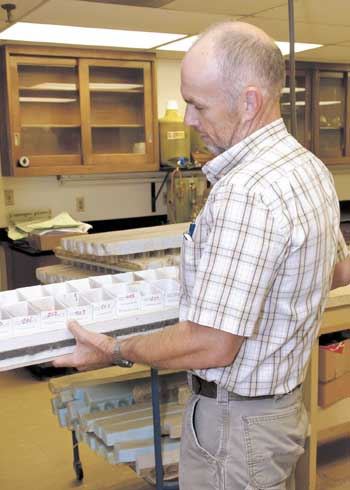|
Lime Fields In The Fall For Nutrient Availability
MISSISSIPPI STATE, MISS.
Row crop producers interested in quality soil should sample fields after harvest and apply recommended lime in the fall.
Larry Oldham, a soil fertility specialist and professor with the Mississippi State University Extension Service, said lime is an important component of soil fertility management because it sets the environment in which plants live and grow.
“We lime soil to increase pH,” Oldham said. “When we increase pH, it improves the availability of some beneficial soil nutrients and decreases the availability of some less desirable soil nutrients.”
Oldham said soil is very complex and reacts in different ways to added substances.
“Soils differ in their buffer capacity, which is their ability to resist change,” he said. “A soil sample is taken to determine how much lime is required to overcome that buffer capacity and get change to occur.”
Soil tests yield important information, including pH and the lime requirement.
Oldham said applying lime can be expensive because it usually comes from out of state. However, knowing the quality of the product can make a difference in how much needs to be applied.
Lime quality is based on purity and particle fineness. Calcite and dolomite are very hard materials that do not readily dissolve in water.
“We want them to dissolve because the calcium or magnesium ion in the lime will react with the soil and replace the acidity-causing agents,” he said. “But because they’re hard, it takes a long time for them to dissolve. A finer grind means the lime has a greater exposure to water and will dissolve faster into soil.”
Since 2005, vendors of lime in Mississippi have been required to give the end purchaser the relative neutralizing value, or RNV. The Mississippi Bureau of Plant Industry’s regulation for lime states the minimum RNV is 63 percent. This figure is used to adjust the lime recommendation based on the particular material to be used.
The recommendations from the MSU soil testing lab assume 100 percent RNV.
“For example, if you use lime with an 80 percent RNV, you would divide 100 by 80, which is 1.25, and apply 1.25 tons or 2,500 pounds,” Oldham said. “Know your RNV and increase your application rate if needed, or contact your county Extension office for help adjusting the final application rate. Failure to adjust the rate results in inadequate application rates to really address acidity issues.”

Keith Crouse, coordinator of the Mississippi State University Extension
Service Soil Testing Laboratory, pulls soil samples that have been ground
and are ready for testing on Sept. 12, 2014. Soil sample reports include information
on pH and how much lime should be applied to fields.
Photo by MSU Ag Communications/ Kevin Hudson
Keith Crouse, coordinator for the MSU Extension Service Soil Testing Lab, said lime application is preferred in the fall to increase the potential reaction time of the insoluble particles before spring.
“Growers should not expect instant results from a lime application,” Crouse said. “In general, growers should expect a change in soil pH in six to eight weeks, but the benefits from liming will be seen in results from a soil sample 12 months later.” ∆
|
|